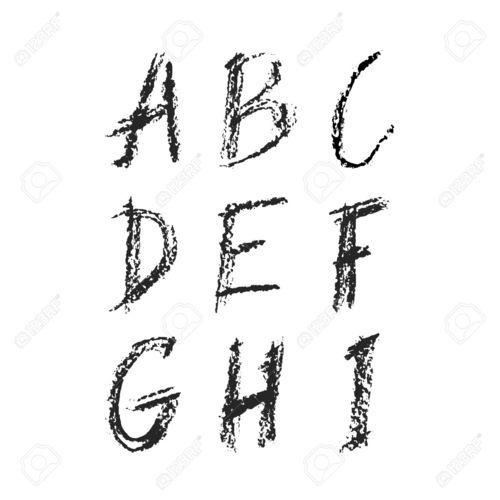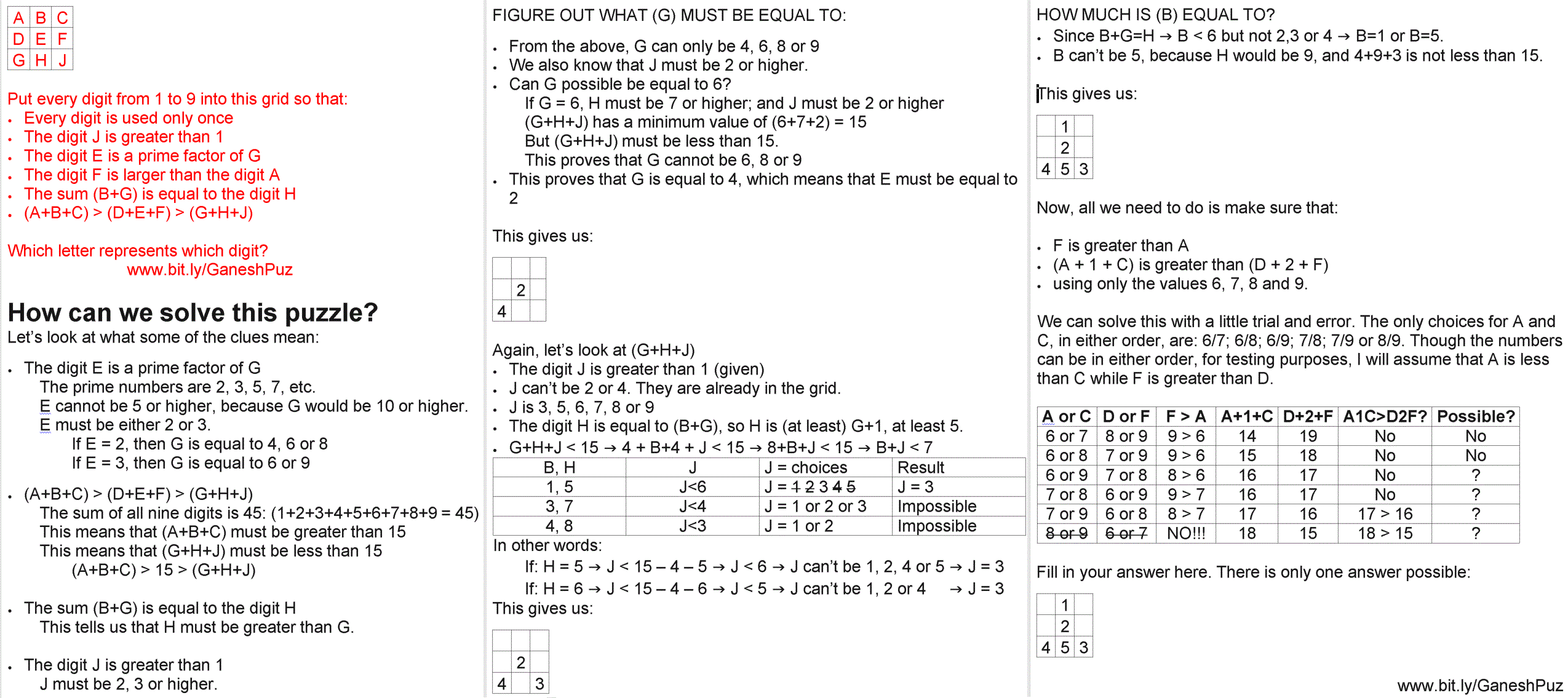Logical Numbers
 All digits 1 to 9 are used in place of the letters A through I such that
All digits 1 to 9 are used in place of the letters A through I such that
-
> >
-
is a prime factor of
-
>
-
-
is not
Which letter represents which number?
Concatenate the answer as the nine-digit integer .
The answer is 719628453.
This section requires Javascript.
You are seeing this because something didn't load right. We suggest you, (a) try
refreshing the page, (b) enabling javascript if it is disabled on your browser and,
finally, (c)
loading the
non-javascript version of this page
. We're sorry about the hassle.

E must be either 2/3.
G must be either 4/6/8/9.
Since sum of all numbers is 45, the maximum that G+H+I can be is 14.
If I=2, then E=3 and G=6. Which means H is greater than 6. And then G+H+I >14 so incorrect.
If I=3, E=2, G= 4/6/8. Since G+H+I is the least G cant be 6/8. G=4.
H can be be max 7, so B can only be 1/2/3 but 2/3 are used up. So B=1. H=5.
ACDF can be 6/7/8/9 in some order. Since A+B+C>D+E+F and F>A, C must be at least 3 greater than D. Thus C=9, D= 6, F=8, A=7.
719628453